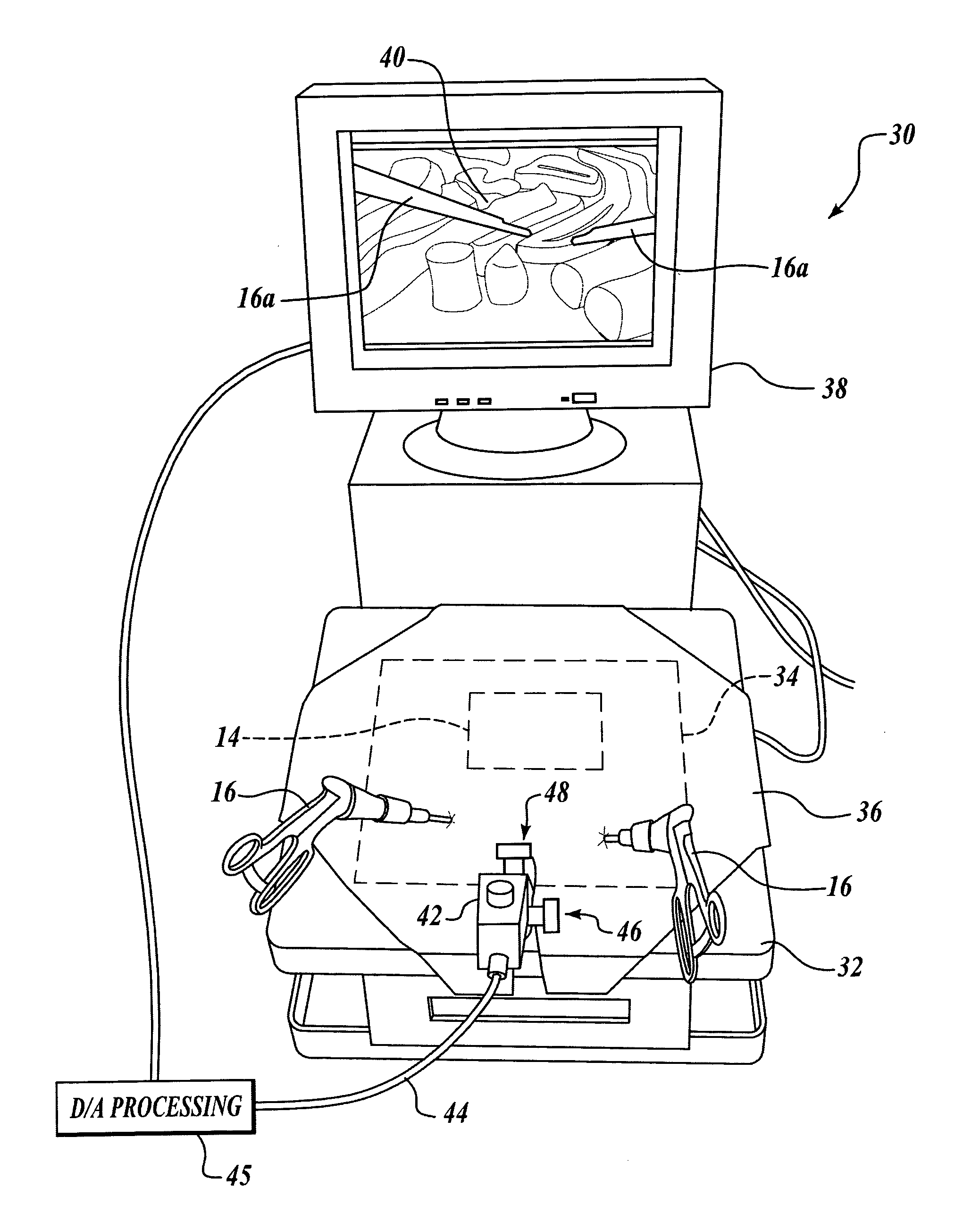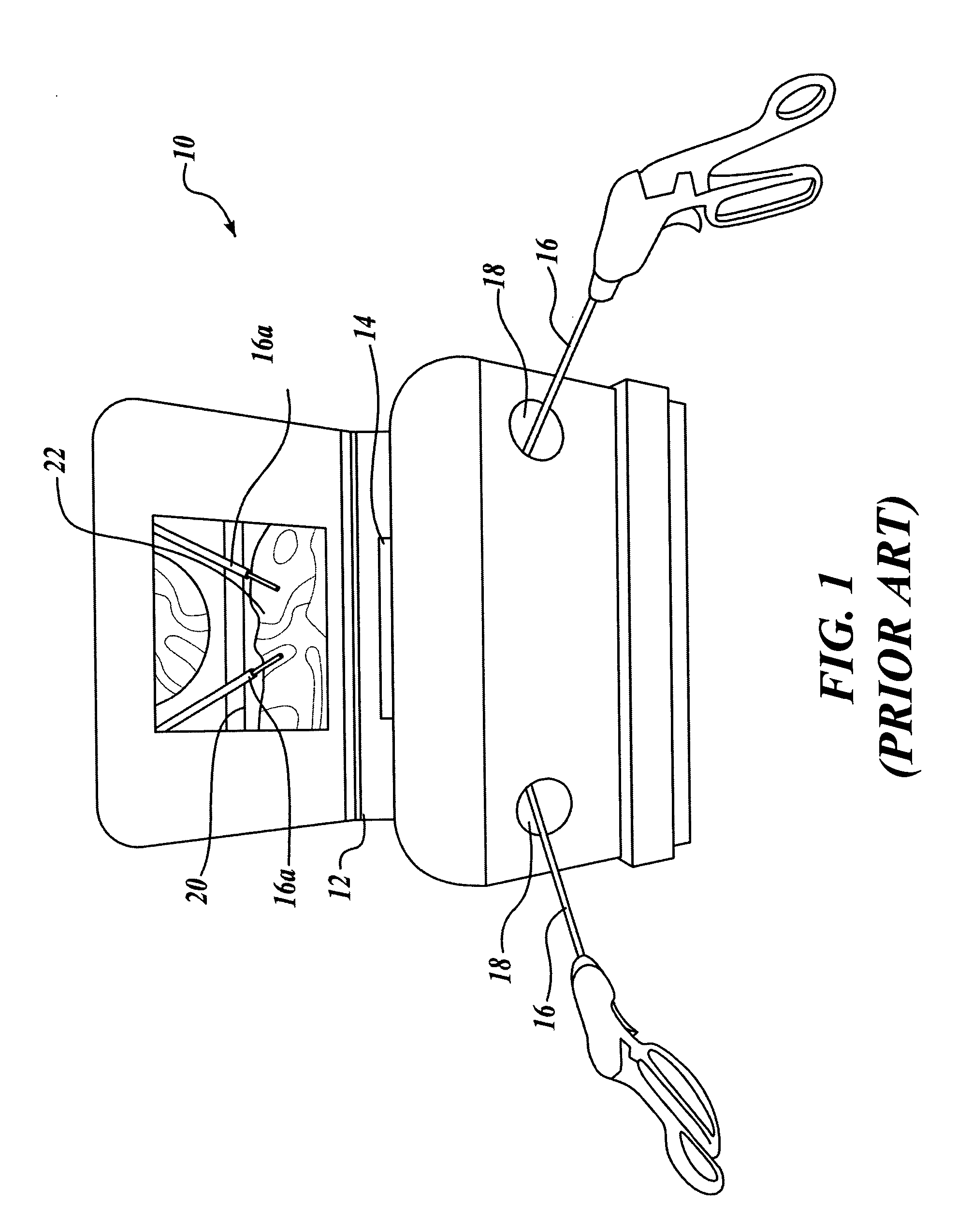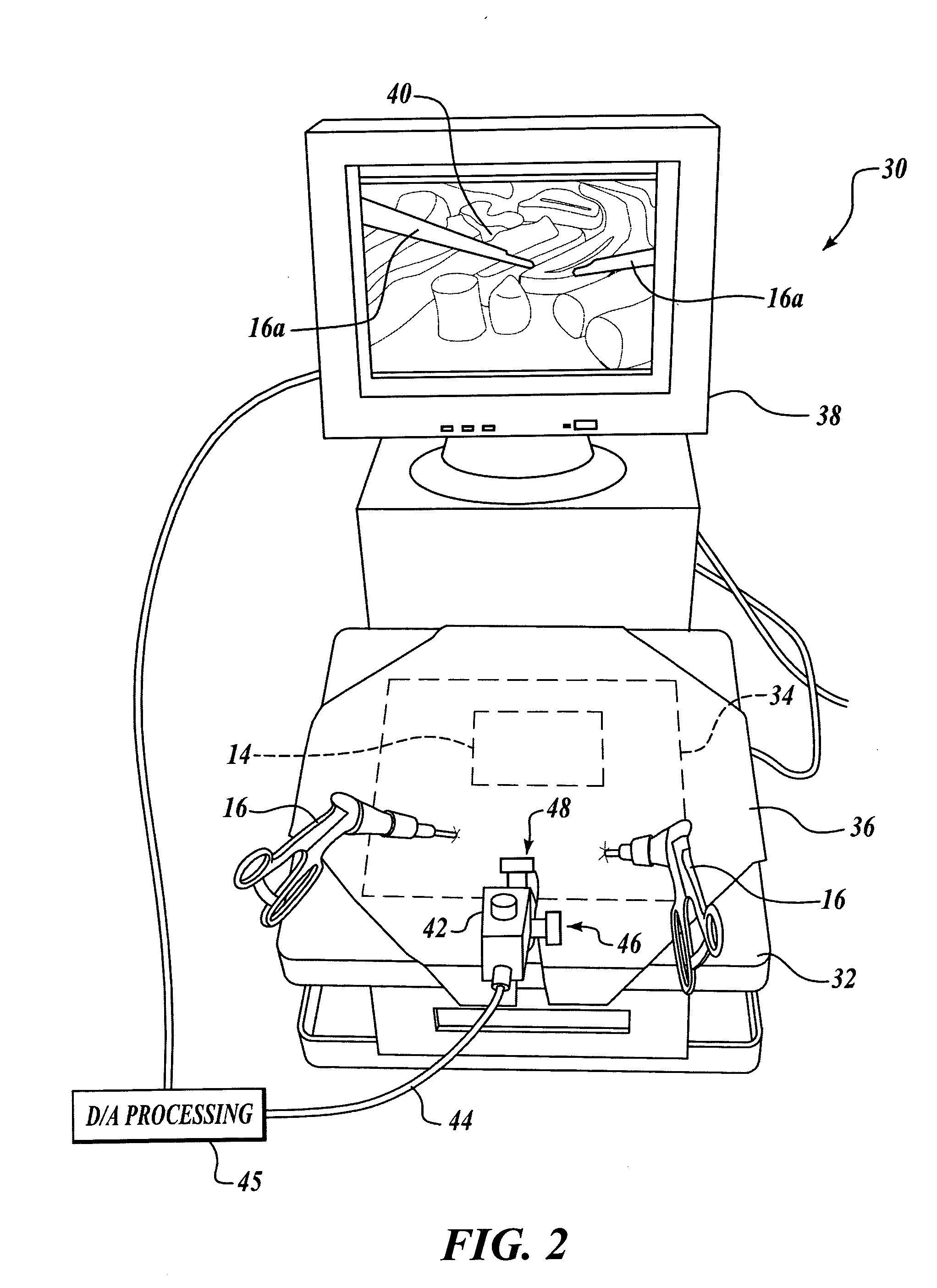[0011] The present invention is a surgical trainer for practicing videoendoscopic surgical techniques. The surgical trainer includes a relatively low-cost, portable
digital camera disposed within the trainer, configured to provide a substantially real-time image of a practice volume defined by the trainer housing. Various embodiments are contemplated, including embodiments in which the position of the
digital camera is fixed, and embodiments in which the
digital camera is selectively positionable to obtain an image of different portions of the practice volume.
[0014] In one embodiment, the digital camera is movably positionable within the practice volume so that when a position of the anatomical structure is changed, the position of the digital camera can be changed to continue to provide a video feed imaging the anatomical structure. Movement of the digital camera enables a
field of view obtained by the digital camera to be varied. Such movement enables the digital camera to obtain an image of at least a portion of the practice volume from a plurality of different angles. Preferably, movement of the digital camera will enable the proximity of the digital camera to be varied relative to at least a portion of the practice volume. Movable and positionable digital cameras are particularly beneficial for training involving the
simulation of an actual
endoscopic procedure, such as suturing, because endoscopic procedures often require the
field of view provided by the
endoscope, which is generally quite limited, to be shifted as the procedure progresses. As will be discussed in more detail below, it is particularly advantageous if the digital camera can be moved in a manner that enables the digital camera to move closer to (or farther from) a desired portion of the practice volume (i.e. to
zoom in on or away from a particular portion of the practice volume). The ability simulates a technique often employed in videoendoscopy; moving a laparoscope or
endoscope closer to (or away from) a particular portion of a surgical field, to
zoom in (or out) relative to a specific portion of the surgical field. In another embodiment, the position of the digital camera is fixed, and the digital camera is configured to image a predefined portion of the practice volume. Trainers having digital cameras in fixed positions are particularly useful for skill based training excercises, such as basic instrument manipulation and two-dimensional recognition skills. If the
field of view provided by a fixed digital camera is sufficiently broad, or if the simulated anatomical structure or other work piece can readily be repositioned relative to the digital camera, such an embodiment can also be used for simulating an actual
endoscopic procedure.
[0017] Preferably, the support structure includes an elongate member having a proximal end disposed outside the practice volume, and a distal end disposed inside the practice volume. The digital camera is coupled with the distal end of the elongate member, such that a manipulation of the proximal end of the support structure changes a position of the digital camera within the practice volume. In at least one embodiment the proximal end of the elongate member includes a
handle configured to simulate the
handle of a conventional laparoscope. Embodiments that include an elongate member structure preferably also include a mounting bracket configured to support the elongate member. In some embodiments, the mounting bracket is configured to slidingly engage the elongate member, such that an amount of the elongate member disposed within the practice volume can be increased and decreased as desired. Such movement enables the digital camera to move closer to or away from portions of the practice volume, enabling the digital camera to
zoom in or out. While some digital cameras include digital and / or optical zooms, requiring or enabling a user to manipulate the elongate member to achieve a desired zoom simulates the manipulation required of a conventional laparoscope or endoscope to achieve a similar zoom, increasing a realism of the training experience. In some embodiments the mounting bracket is configured to pivotally engage the elongate member, such that a position of the distal end of the elongate member within the practice volume can be adjusted. In some embodiments the mounting bracket is configured to pivotally engage the housing, such that a position of the distal end of the elongate member within the practice volume can be adjusted. Particularly preferred mounting brackets enable different ranges of motion to be achieved.
[0020] Generally, a size of the digital camera is significantly larger than a size of a distal end of a conventional laparoscope, such that the digital camera could not pass through an incision configured to receive a conventional laparoscope. This enables relatively inexpensive digital cameras, such as web cams, to be employed.
[0024] Yet another aspect of the present invention is a method for using a digital camera to enhance endoscopic
skills training, by providing a substantially real-time image of the skill training exercise. This method includes the step of providing a surgical trainer defining a practice volume in which a digital camera is disposed. The digital camera is then used to obtain a
video image of the practice volume that is displayed. The trainee remotely manipulates one or more objects within the practice volume using elongate tools, while viewing the manipulation on the display. The objects can be placed within the practice volume before or after the digital camera is energized. Once again, in addition to the immediate display of the digital images of the manipulations, such digital images can be stored for later review or transmitted in real-time or at a later time) over a network for viewing by others, and printouts of selected images can be made.
 Login to View More
Login to View More  Login to View More
Login to View More 


